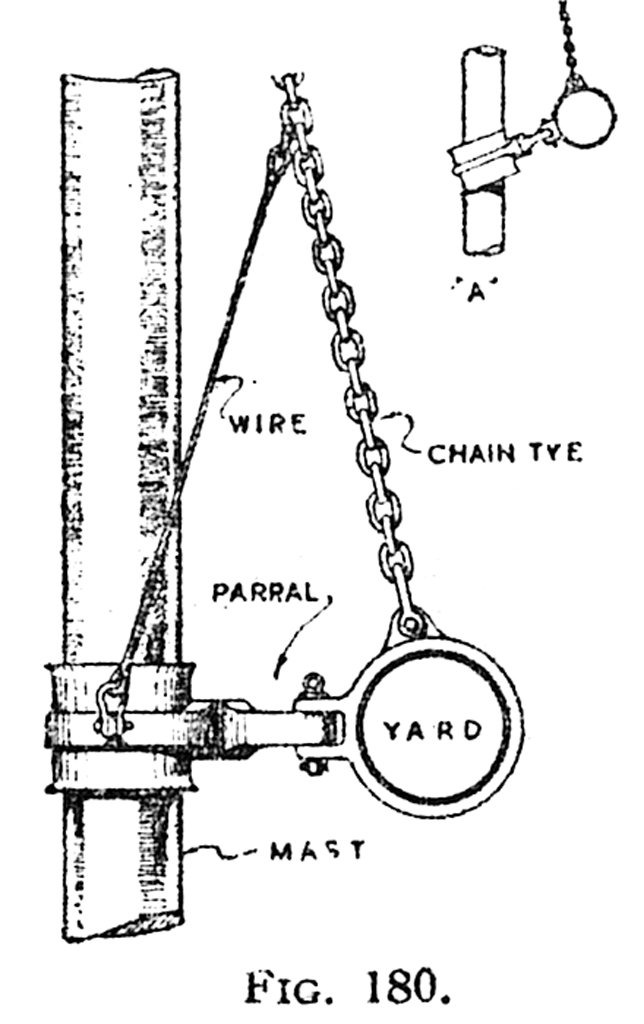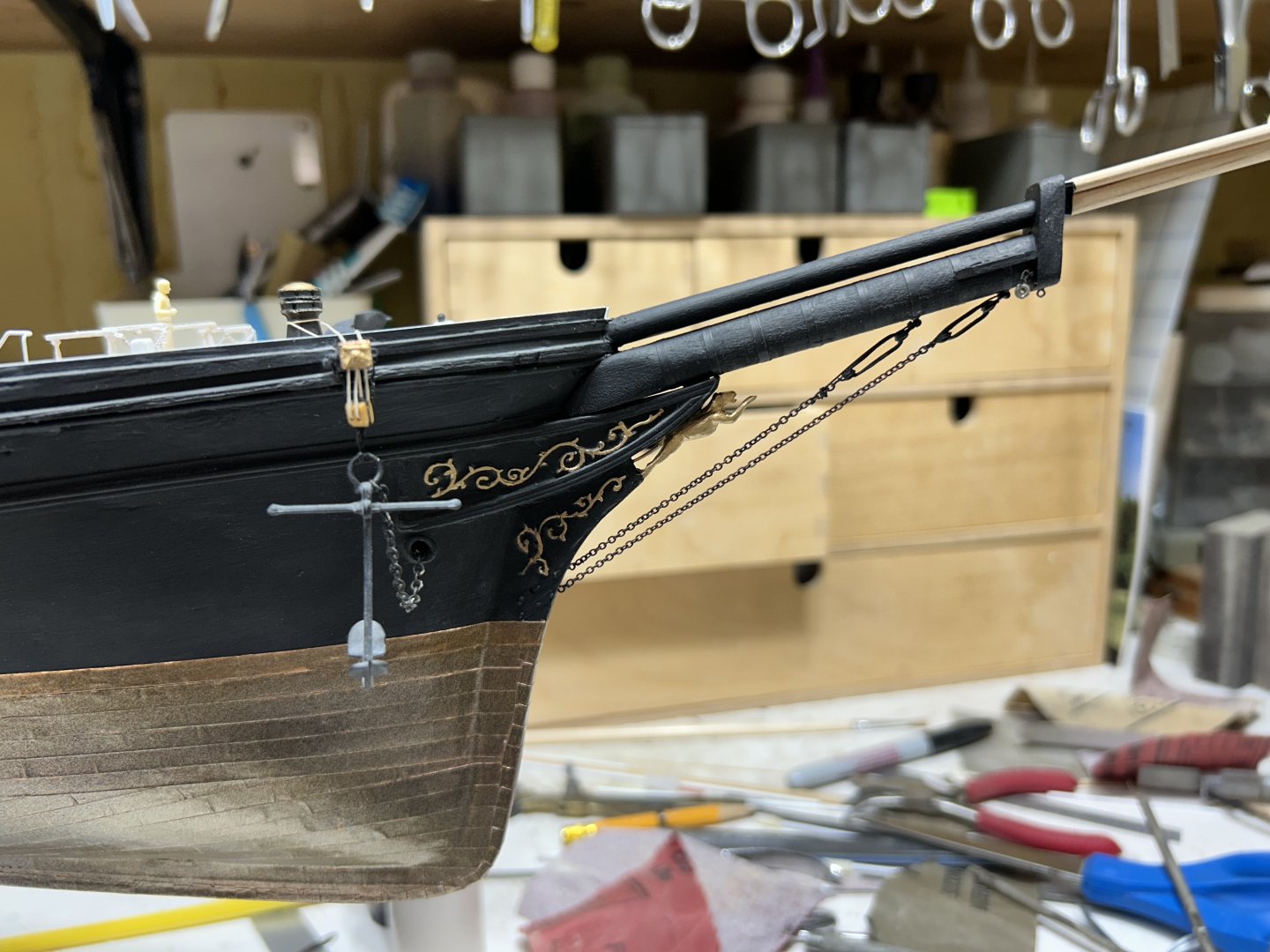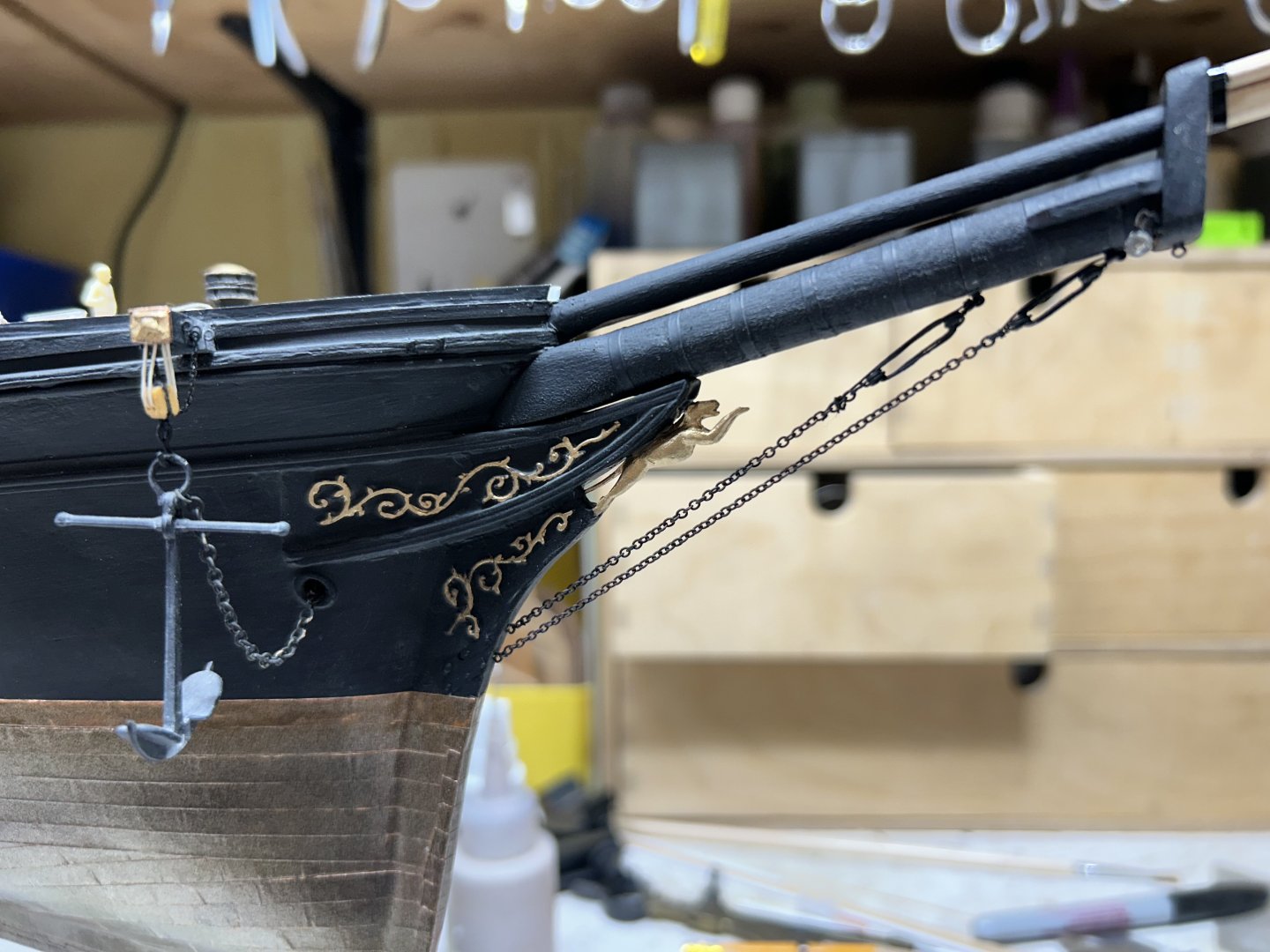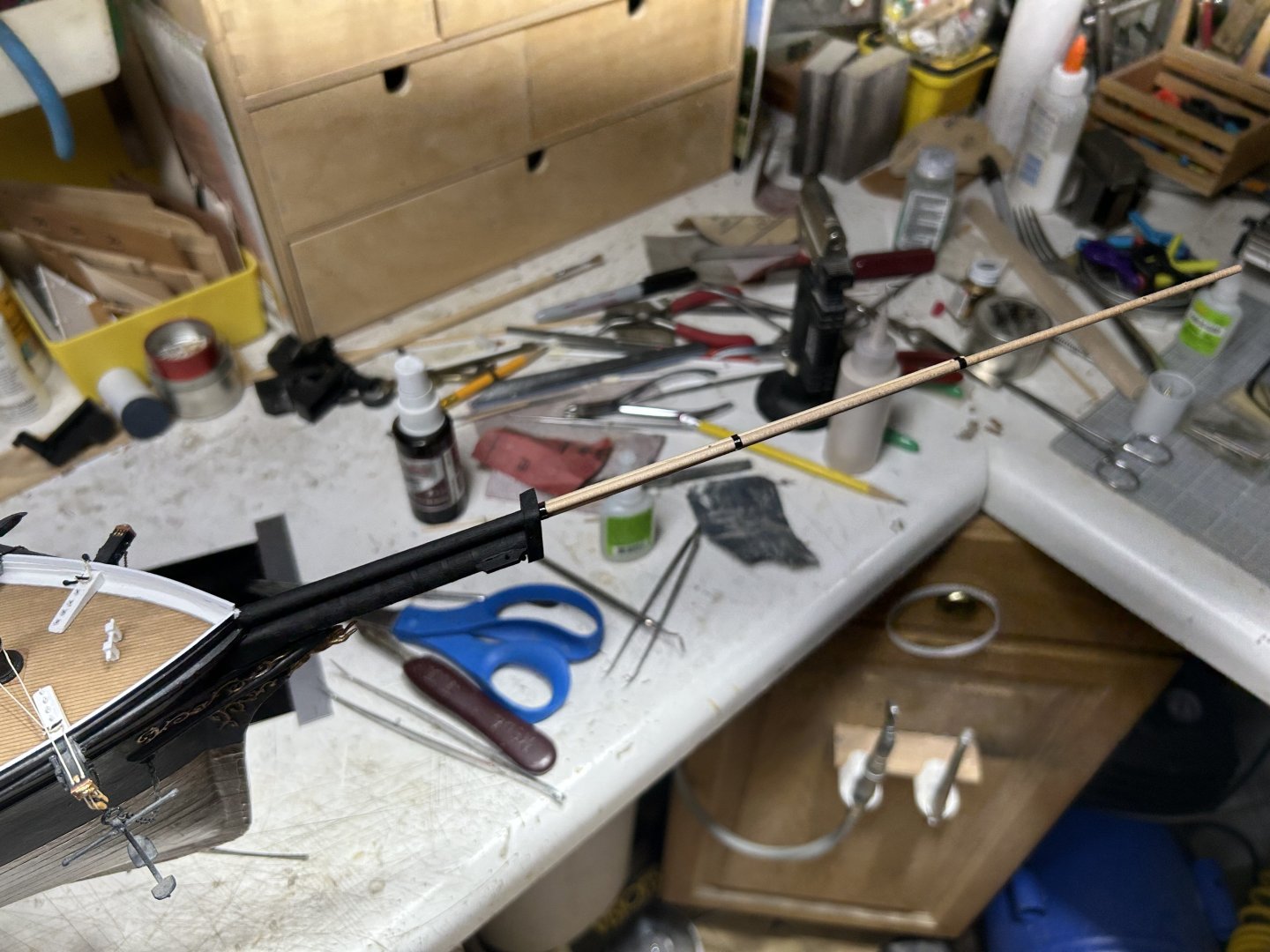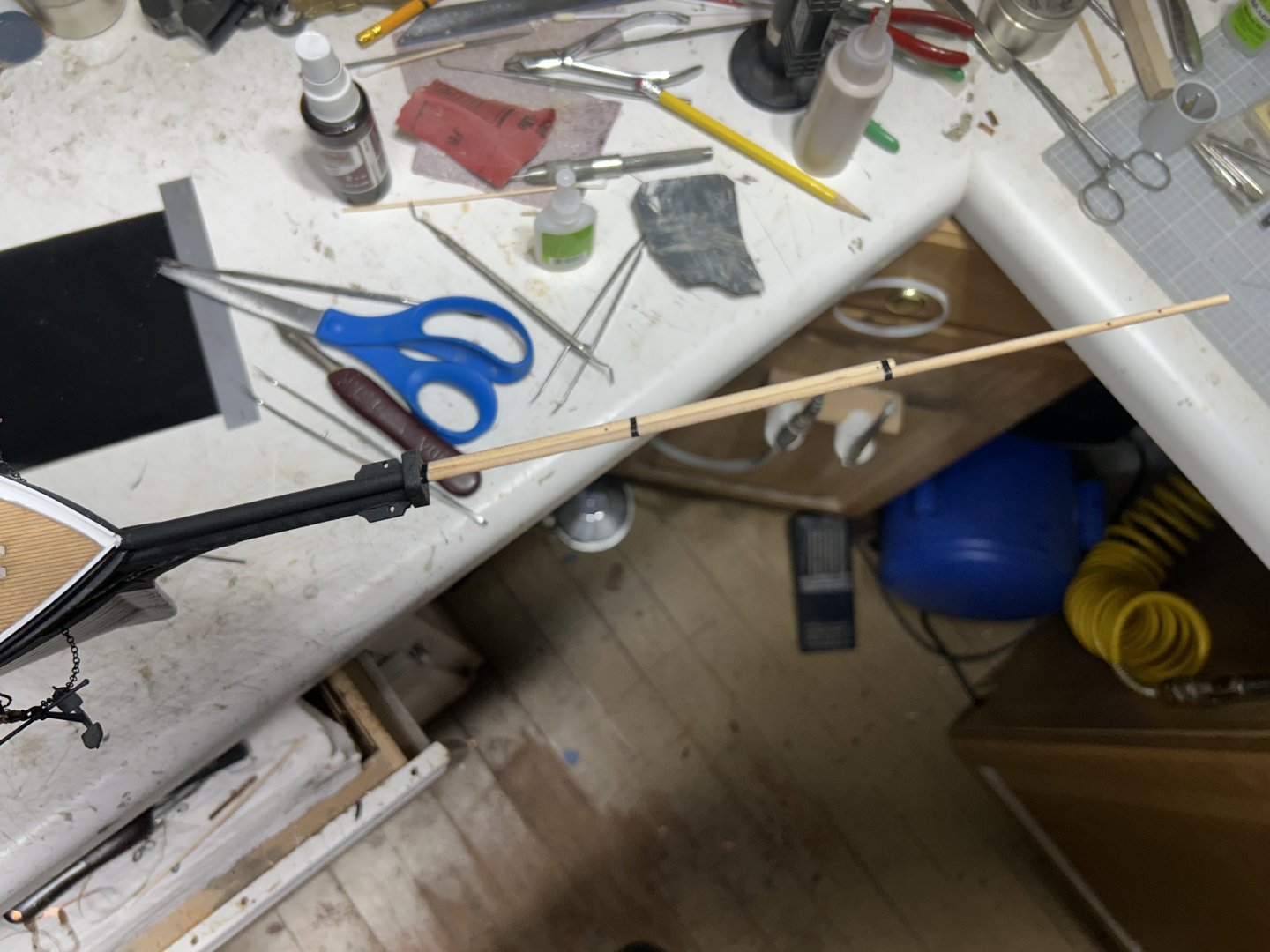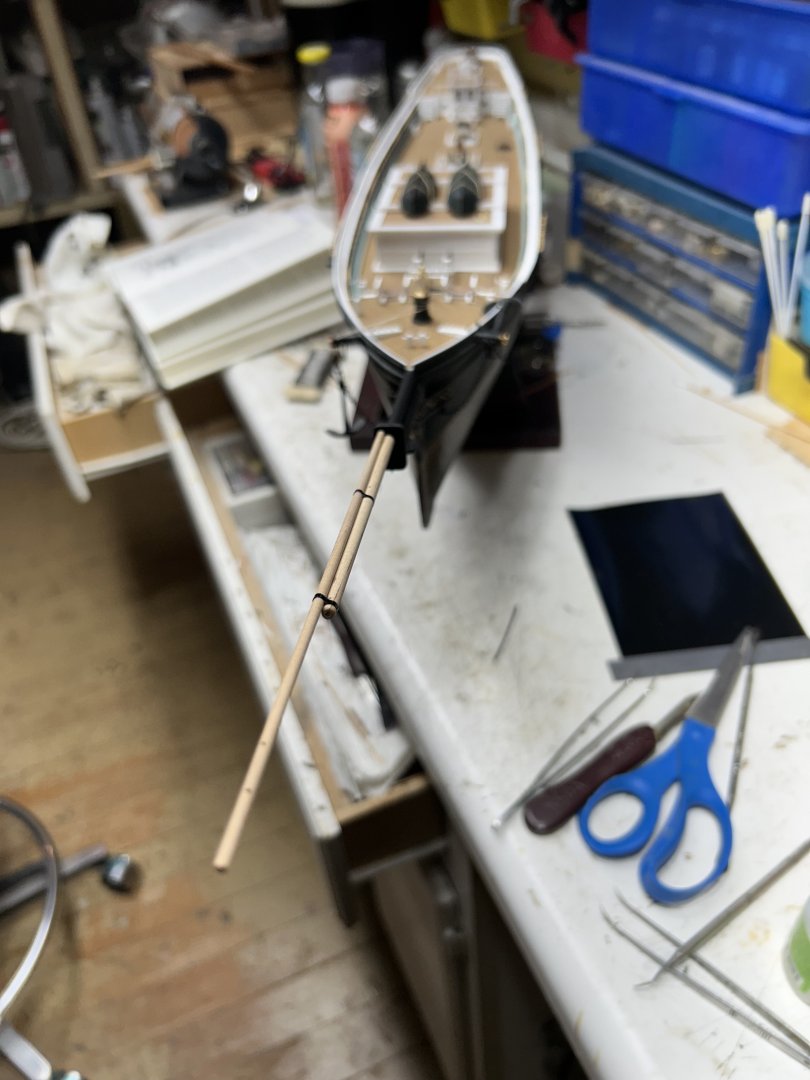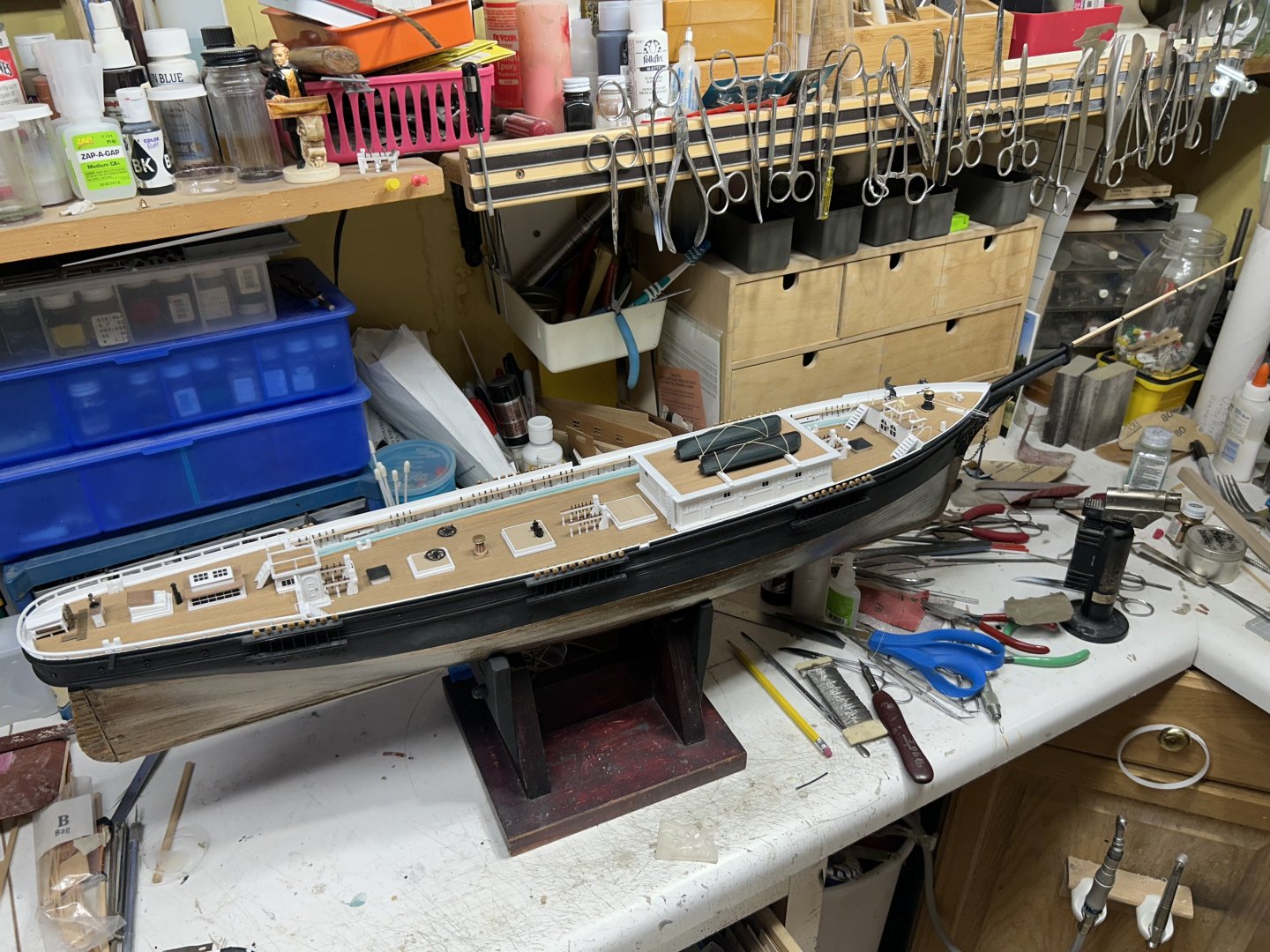-
Posts
5,509 -
Joined
-
Last visited
Content Type
Profiles
Forums
Gallery
Events
Everything posted by rwiederrich
-
Just beautiful. Your attention to clean precise details is just astounding. Rob
- 91 replies
-
- Cutty Sark
- Sergal
-
(and 1 more)
Tagged with:
-
Further observation....concludes that it is true Duncan McLean of the Boston Atlas, did indeed say that Flying Fish did have double topsail ties. But I argue...not in the manner model designers have drawn. Their design causes the tie's to run free within 3 gin blocks. Meaning one side could be purchased in greater effect...resulting in the chain passing freely through all gin blocks. Making any parral lift cable bolted to the tie inoperable. For it would pull up against the cable or bind at one or both of the purchases. The arrangement drawn here is not compatible for top sail yard parral lifts. And if you can't lift the parral along with the yard...you will bind the parral on the mast. See first image. I propose that each tie coming down from each gin block under the top tree...attach to the iron band instead of on center of an iron bar. This would also eliminate extra hardware like the bar and gin block that would impede full upward travel along the mast. You would still have port and starboard purchases that terminate at the channel and pin rail .
-
Back to business. In my constant research, I have discovered(many years ago) that the double tie lift/halyards found on clipper models such as Flying fish and Flying Cloud's topsail yards...is in all practical purposes incorrect. They depict the tie on both sides of the top trestle tree as connected to the gin block found on the crane just top of the yard lift band. This arrangement, will not permit the necessary Parral lift wire to work at lifting the parral along with the yard evenly. Here is a picture of the said published design. Note that both ends of the tie end in haulyard purchases on opposite sides of the hull....along the channels. Here is another picture of the proper arrangement for a parrel left wire to attach to the tie and even lift the parrel and yard evenly....to prevent binding. Lastly, note the actual cable lift on this image that afixes to the parral from the chain tie lift.
-
There were far too many factors that led to the American clipper demise. North American Transcontinental access via rail(which helped and hurt). The war of Southern oppression, indiscriminately altered American shipping (Leaving few for robust international competition) . The Black Ball line of Liverpool purchased more American clippers that any other. More speed and cargo capacity. Economics(Shipping costs). If it were not for the British insatiable demand for tea...the *Great Tea races* would have never found fruition. so many factors....realized and otherwise,.... contributed to American clippers being lost to time. I, however, have but one non American clipper in my fleet of clippers. The little Cutty Sark. She shares the harbor with Sea Witch, Swordfish, Great Republic, Glory of the Seas, Staghound....oh and their little whaling friend C.W. Morgan. Long live the American clipper......at my house!😍 Rob
-
Oh....I agree...flying Cloud made the fastest passages during the seasons that she made them. and I agree, she retains that unequaled record for any large 3 masted deep water full rigged ship(to be clear). But, there IMHV, is more to the qualification as, *Best clipper*, then simply a fast passage. Far too many contributors need to be taken into consideration. But a flat out race...if the conditions were right for a 465 mile achievement in a 24 hour period were to be sustained during the entire voyage.....it would be clear who was the fastest vessel afloat. So many factors need to be considered....such as, hull design(which effects stability and buoyancy), friction coefficients, wind direction and speed, sail dynamics and placement, crew availability and aptitude, and course application. And the list goes on. And we haven't even discussed cargo capacity, and ship ergonomics. When one considers the ease of accessibility in deck arrangements that favors crew egression.....I'de have to stick with clippers like the Lighting and the Donald McKay. So much to choose from... Rob
-
Good question. I would have to say the fast clippers Lightning or Champion of the Seas. (Both were *extreme* clippers). Lighting sailed over 436 nautical miles in one day. and Champion of the Seas sailed over 465 nautical miles in a 24 hour period. Making her one of the fastest clippers. (Note: McKay had several of his clippers achieve over 465 nautical miles a day). Both of these ships recorded speeds in excess of 21 knots. Both were over twice as large as CS. If it were not for the American civil war....we would probably have an American example of a clipper with us today. The Confederates captured and burned more clippers than were built, during that time period. Clippers were a truly an American invention. Rob
-
Our studies of McKay and his continually evolving clipper family of specific models......implores us to seriously conclude, that he also spent time developing his packet models as well. Though he fell to the whims of the owners, he didn't get to really show off his designing prowess until Staghound. And , as you put it, was *contractually committed* to build her at breakneck speed. It is very possible he drew heavily from his Packet days, and the prevailing rigging practices of that time. No time(YET), to re-invent the wheel.
-
Since further research revealed that McKay most likely followed a bowsprit design from previous packets and frigates. And particularly, those that exhibited the flying jibboom, generally followed one of three particular designs. I assumed Staghound's flying jibboom would be close to that of the Lighting. However, the lightning was built 4 years later...and she followed the shorter outer jib doubling method. Like how Bruce Von Statina replicated it on his Lightning model. Research is pointing me in another direction. Because Staghound was McKay's first extreme clipper, and it can be assumed with great confidence, that he followed many rigging principals and structures that were prolific at the time(such as the large single topsail). And....that Staghound had an unusually long bowsprit/jibboom arrangement. I have decided to replicate her using the fully extended flying jibboom, who's doubling extends the full length of the jibboom, up to the bowsprit cap. This full length flying jibboom...still extended 22ft past the end of the jibboom...but was lashed or ironed in 3 places along its length. As mentioned earlier, this design was used on packets and certain kinds of Frigates from the 1840's up until the late 1850's. In my assessment, this cleaner arrangement is more structurally sound. As with the shorter doubling design...the flying jibboom is canted to starboard to permit the forestays to sheeve through the jibboom along its centerline. I'll post images a bit latter today. Rob
-
If that flying jib gets any smaller....the sheeves for the outer stays will surely compromise the boom and make it less resiliant to stress, and more apt to breakage. I think I'm going to recreate my iron works to permit the flying jib to rest against the outer jib. Reducing the gap between jibs and permitting a cleaner more continuous projection of booms. Trick is....the jibboom cannot be modified untill it is passed through the endap of the bowsprit....locking it in place. I will have to make all the necessary additions to the bowsprit...prior to any mods to the jibbooms. The mods to the flying jib will have to wait till the finishing of the bowsprit and I'm ready to glue it in place at the prow of the hull. Once the bowsprit is glued on....I can then glue the jibboom to the bowsprit, and then, I can glue the flying jib with the new hardware to the outer jibboom. I hope that makes sense.🤓 Rob
-
Not sure that is the solution. Bruce simply rigged the flying jib as I did. But I think I need to reduce the diameter of the jib and thus make the bracketing lighter. Here is another of Bruce's work...you can see the space clearly between the booms. The flying jib is rotated to the right to permit the stays clear passage.
About us
Modelshipworld - Advancing Ship Modeling through Research
SSL Secured
Your security is important for us so this Website is SSL-Secured
NRG Mailing Address
Nautical Research Guild
237 South Lincoln Street
Westmont IL, 60559-1917
Model Ship World ® and the MSW logo are Registered Trademarks, and belong to the Nautical Research Guild (United States Patent and Trademark Office: No. 6,929,264 & No. 6,929,274, registered Dec. 20, 2022)
Helpful Links
About the NRG
If you enjoy building ship models that are historically accurate as well as beautiful, then The Nautical Research Guild (NRG) is just right for you.
The Guild is a non-profit educational organization whose mission is to “Advance Ship Modeling Through Research”. We provide support to our members in their efforts to raise the quality of their model ships.
The Nautical Research Guild has published our world-renowned quarterly magazine, The Nautical Research Journal, since 1955. The pages of the Journal are full of articles by accomplished ship modelers who show you how they create those exquisite details on their models, and by maritime historians who show you the correct details to build. The Journal is available in both print and digital editions. Go to the NRG web site (www.thenrg.org) to download a complimentary digital copy of the Journal. The NRG also publishes plan sets, books and compilations of back issues of the Journal and the former Ships in Scale and Model Ship Builder magazines.





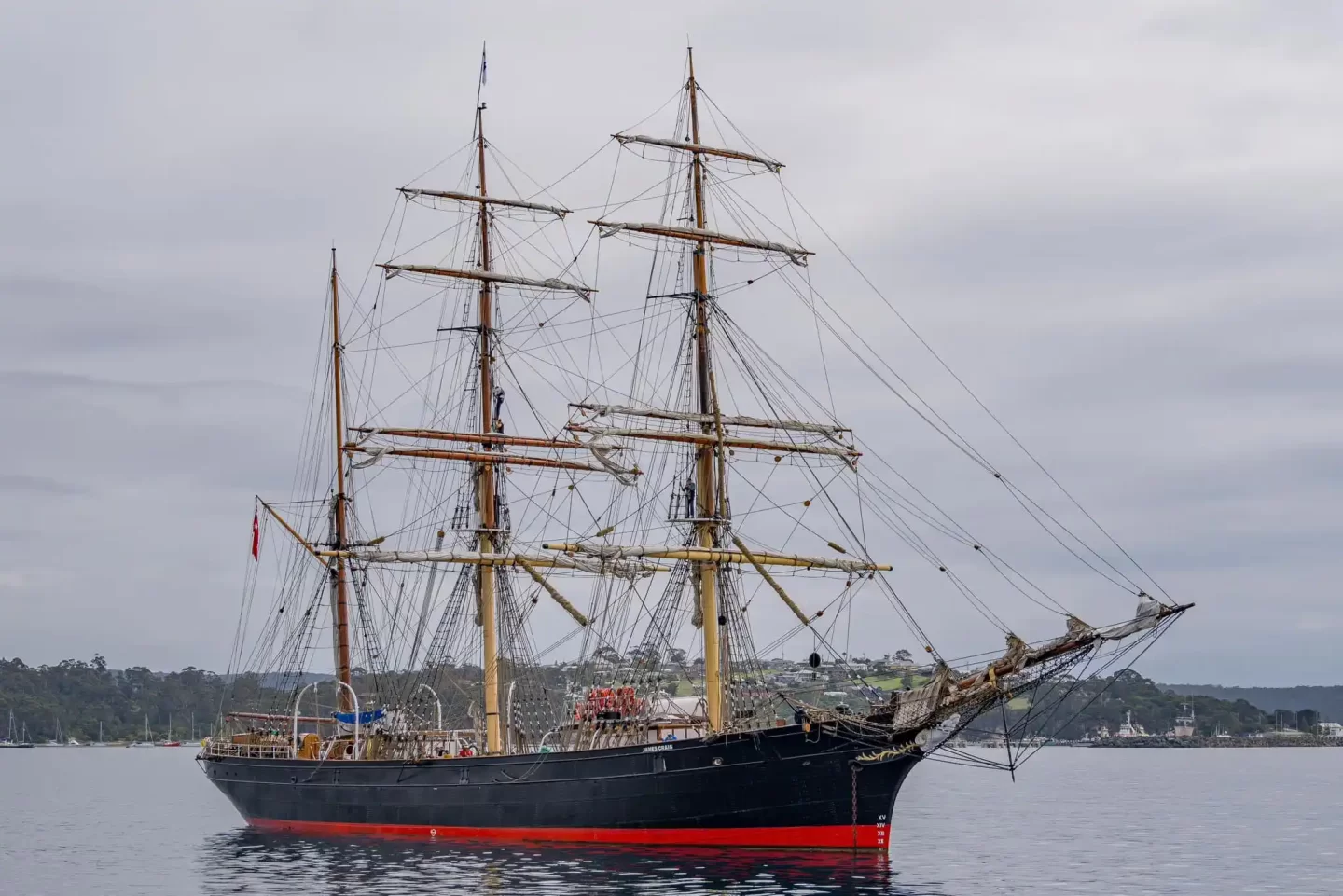

.png.67d596a5dd915c503d6e38f7580a85a7.png)
